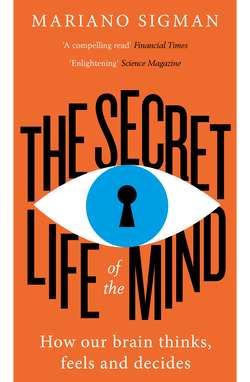Читать книгу The Secret Life of the Mind: How Our Brain Thinks, Feels and Decides - Mariano Sigman - Страница 20
The good, the bad and the ugly
ОглавлениеWe began this chapter with the arguments of the empiricists, according to which all logical and abstract reasoning occurs after the acquisition of language. But nevertheless we saw that even newborns form abstract and sophisticated concepts, that they have notions of mathematics, and display some understanding of language. At just a few months old, they already exhibit a sophisticated logical reasoning. Now we will see that young children who do not yet speak have also forged moral notions, perhaps one of the fundamental pillars of human social interaction.
The infants’ ideas of what is good, bad, fair, property, theft and punishment – which are already quite well established – cannot be fluently expressed because their control tower (circuits in the prefrontal cortex) is immature. Hence, as occurs with numerical and linguistic concepts, the infants’ mental richness of moral notions is masked by their inability to express it.
One of the simplest and most striking scientific experiments to demonstrate babies’ moral judgements was done by Karen Wynn in a wooden puppet theatre with three characters: a triangle, a square and a circle. In the experiment, the triangle goes up a hill. Every once in a while it backs up only to later continue to ascend. This gives a vivid impression that the triangle has an intention (climbing to the very top) and is struggling to achieve it. Of course, the triangle doesn’t have real desires or intentions, but we spontaneously assign it beliefs and create narrative explanations of what we observe.
A square shows up in the middle of this scene and bumps into the triangle on purpose, sending it down the hill. Seen with the eyes of an adult, the square is clearly despicable. As the scene is replayed, the circumstances change. While the triangle is going up, a circle appears and pushes it upwards. To us the circle becomes noble, helpful and gentlemanly.
This conception of good circles and bad squares needs a narrative – which comes automatically and inevitably to adults – that, on the one hand, assigns intentions to each object and, on the other, morally judges each entity based on those intentions.
As humans, we assign intentions not only to other people but also to plants (‘sunflowers seek out the sun’), abstract social constructions (‘history will absolve me’ or ‘the market punishes investors’), theological entities (‘God willing’) and machines (‘damn washing machine’). This ability to theorize, to turn data into stories, is the seed of all fiction. That is why we can cry in front of a television set – it is strange to cry because something happens to some tiny pixels on a screen – or destroy blocks on an iPad as if we were in a trench on the Western Front during the First World War.
In Wynn’s puppet show there are only triangles, circles and squares, but we see them as someone struggling, a bad guy who hinders progress, and a do-gooder who helps. Which is to say that, as adults, we have an automatic tendency to assign moral values. Do six-month-olds have that same abstract thought process? Would babies be able spontaneously to form moral conjectures? We can’t know by asking because they don’t yet talk, but we can infer this narrative by observing their preferences. The constant secret of science consists, precisely, in finding a way of bridging what we want to know – in this case, whether babies form moral concepts – with what we can measure (which objects the babies choose).
After watching one object helping the triangle climb the hill and another bumping it down, infants were encouraged to reach for one of them. Twenty-six of twenty-eight (twelve out of twelve six-month-olds) chose the helper. Then, the video recordings of the infants watching the scenes of the helper and the hinderer were shown to an experimentalist. And, relying on their facial gestures and expressions alone, she could predict almost perfectly whether the infant had just seen the helper or the hinderer.
Six-month-old infants, before crawling, walking or talking, when they are barely discovering how to sit up and eat with a spoon, are already able to infer intentions, desires, kindness and evil, as can be deduced from examining their choices and gestures.
